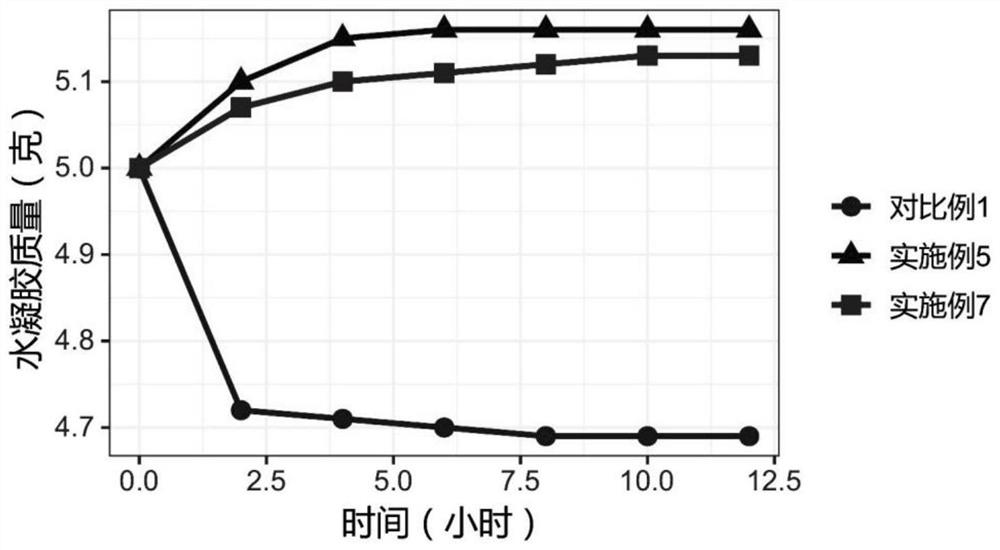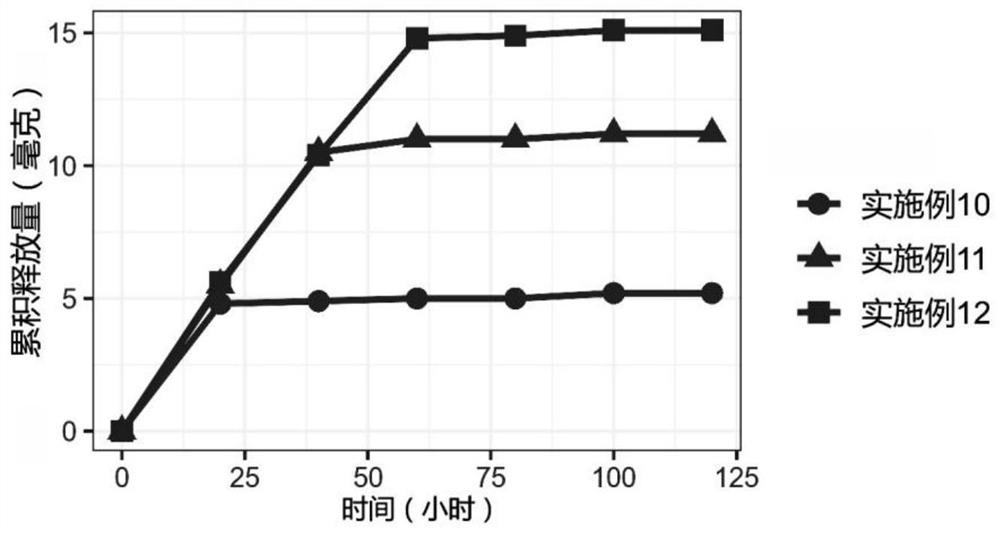Graphene-enhanced hydrogel, graphene-enhanced hydrogel bacterial carrier, preparation method and application
A graphene and hydrogel technology, applied in the field of biomedical materials, can solve problems such as poor mechanical properties and thermal properties, limit applications, etc., and achieve the effect of hindering permeability, promoting establishment and balance, and slowing water loss rate.
- Summary
- Abstract
- Description
- Claims
- Application Information
AI Technical Summary
Problems solved by technology
Method used
Image
Examples
preparation example Construction
[0059] According to a second aspect of the present invention, the present invention provides a method for preparing graphene-enhanced hydrogel, comprising the following steps:
[0060] The amphiphilic graphene is added to the sodium alginate solution, and then the calcium lactate solution is added, so that the sodium alginate and calcium ions undergo a cross-linking reaction to obtain a graphene-enhanced hydrogel.
[0061] According to the third aspect of the present invention, the present invention provides the application of the graphene-enhanced hydrogel in the preparation of bacteria, drugs or gene carriers.
[0062] Preferably, the bacteria include fecal bacteria, which refers to an extract of intestinal fecal bacteria.
[0063] The graphene-enhanced hydrogel provided by the invention can also be used to prepare medicaments for treating chronic diarrhea.
[0064] According to a fourth aspect of the present invention, the present invention provides a graphene-enhanced hyd...
Embodiment 1
[0079] This embodiment provides a graphene-enhanced hydrogel, which is prepared according to the following steps:
[0080] Dissolve 2.54g sodium alginate and 0.1g amphiphilic graphene in 80.96g deionized water, dissolve 1.4g calcium lactate in 15g deionized water, drop the calcium lactate solution into the mixed solution of sodium alginate-amphiphilic graphene , to obtain a graphene-enhanced hydrogel, wherein the mass proportion of calcium alginate is 2.5%, the mass proportion of sodium lactate is 1.5%, the mass proportion of amphiphilic graphene is 0.1%, and the mass proportion of water is 95.9%. .
[0081] Wherein, amphiphilic graphene is prepared according to the following steps:
[0082] Mix 10g of hexamethylene diisocyanate (sufficient excess) with 1g of graphene oxide in anhydrous N, N-dimethylformamide (DMF), and react at 80°C for 12h. One end of hexamethylene diisocyanate Isocyanate reacts with the carboxyl or hydroxyl groups on the graphene oxide surface, and is con...
Embodiment 2
[0084] The present embodiment provides a graphene-enhanced hydrogel, which differs from Example 1 in that the quality of adding amphiphilic graphene is 2.5 g, and in the obtained graphene-enhanced hydrogel, calcium alginate The mass proportion is 0.5%, the mass proportion of sodium lactate is 0.3%, the mass proportion of amphiphilic graphene is 2.5%, and the mass proportion of water is 96.7%.
PUM
| Property | Measurement | Unit |
|---|---|---|
| molar mass | aaaaa | aaaaa |
| molar mass | aaaaa | aaaaa |
Abstract
Description
Claims
Application Information
 Login to View More
Login to View More - R&D
- Intellectual Property
- Life Sciences
- Materials
- Tech Scout
- Unparalleled Data Quality
- Higher Quality Content
- 60% Fewer Hallucinations
Browse by: Latest US Patents, China's latest patents, Technical Efficacy Thesaurus, Application Domain, Technology Topic, Popular Technical Reports.
© 2025 PatSnap. All rights reserved.Legal|Privacy policy|Modern Slavery Act Transparency Statement|Sitemap|About US| Contact US: help@patsnap.com



